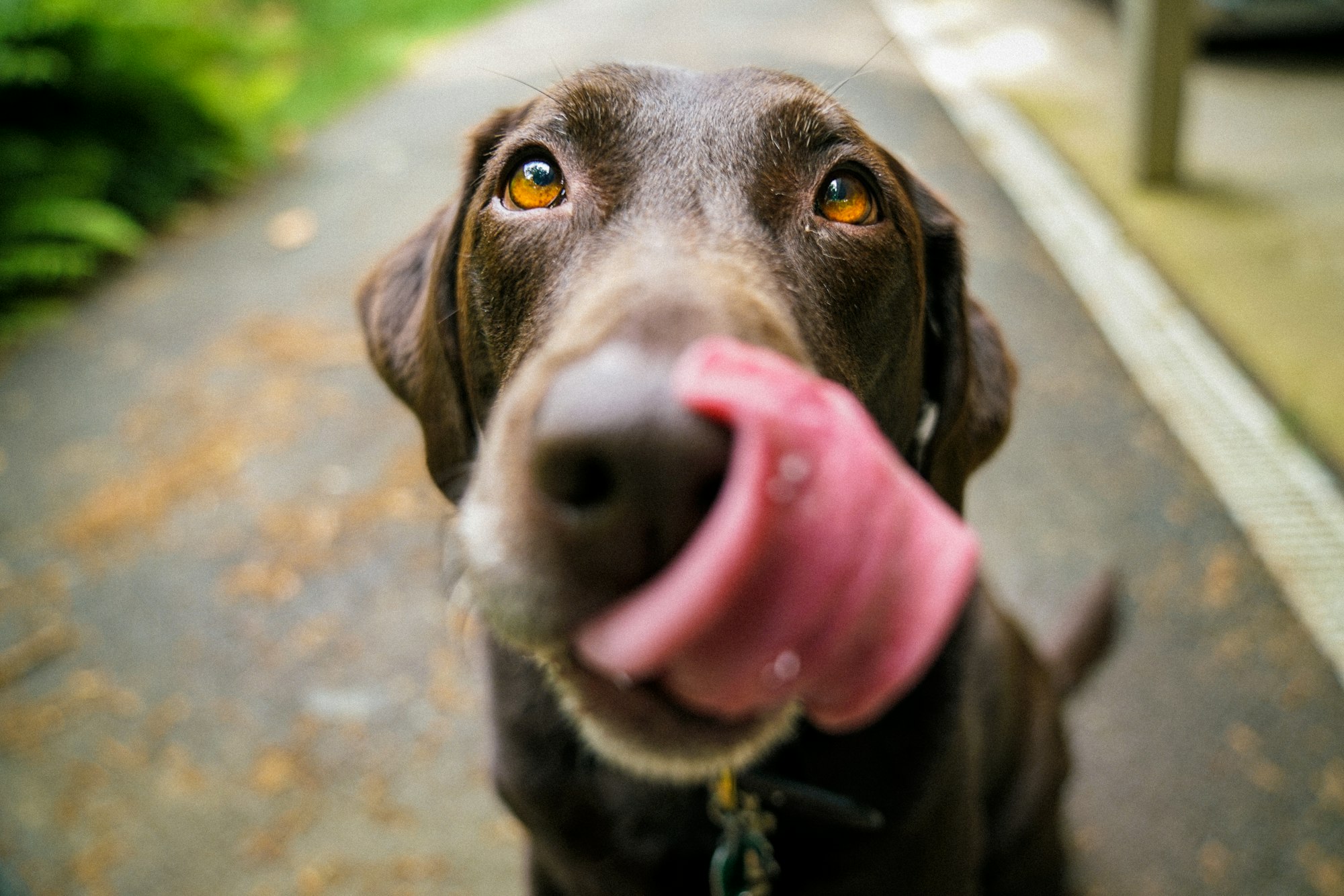You've probably never thought about your dog getting a condition like Cushing's disease, right? It might sound fancy and a tad intimidating. But, Cushing's Disease in Dogs is more common than you might think. This story-driven guide will shed some light on this ailment, its symptoms, diagnosis, and the all-important care measures you need to know.
A Tail's Tale: Rocky's Rough Patch
Meet Rocky. He's a lively Norwegian Elkhound with a glint in his eyes. For years, he was the life of the park, always in high spirits, and ever so playful. But as time went on, something changed. Rocky began drinking water more often, and his once lean physique took on a more rounded appearance. It wasn't the extra treats; it was something deeper.
Telltale Symptoms of Cushing's Disease
Rocky's sudden increase in thirst and his abdominal enlargement weren't just random occurrences. These are some common symptoms of Cushing's Disease in dogs.
Other symptoms include:
- Frequent urination
- Hair loss (poor Rocky started losing his lush coat)
- Increased appetite
- Skin infections
- Fatigue
However, not all symptoms show up in every dog. For instance, a French Brittany might exhibit skin infections more than hair loss. It's essential to keep an eye out and know your dog.
Diagnosing the Culprit
Rocky's owner, a vigilant lady, noticed these changes and took him to the vet. The veterinarian, after hearing the symptoms and running a few tests, concluded it might be Cushing's. It's essential to get a proper diagnosis. The vet will usually perform:
- Blood tests
- Urine tests
- Ultrasound
To be sure, sometimes vets do an ACTH stimulation test or a low-dose dexamethasone suppression test. Fancy names, but essential for our furry friends.
So, What Causes This?
Cushing's disease, or hyperadrenocorticism, means your dog has high cortisol levels. Cortisol is a hormone produced in the adrenal glands. Two primary reasons lead to this:
- Pituitary-dependent hyperadrenocorticism: This mouthful of a term means that there's a benign tumor in the pituitary gland, causing excessive cortisol production.
- Adrenal-dependent hyperadrenocorticism: Here, the adrenal gland itself has a tumor leading to the high cortisol levels.
Caring for a Cushing's Dog
Once Rocky was diagnosed, his care regimen changed. Here's how you can help a dog with Cushing's:
- Medication: Depending on the cause, vets will prescribe appropriate medicines.
- Regular Check-ups: Monitoring is essential. Frequent vet visits ensure that the disease is under control.
- Diet and Exercise: A balanced diet and regular exercise can help manage symptoms. Perhaps you can get them the best toy for teething puppies to ensure they remain active.
- Special Care: Some dogs, like the husky breeds, might need specific attention due to their dense coats.
Remember, dogs with Cushing's can live a healthy and full life with proper care.
Let's Address Some Curiosities
While we're diving deep into this topic, let's satiate a couple of related curiosities.
- Can Dogs Have Cinnamon? It might seem unrelated, but many dog owners ask this while adjusting their pet's diet. Yes, dogs can have cinnamon. It's non-toxic and can even offer some health benefits. However, moderation is key.
- Malamute vs Husky: People often confuse the two. While they share some similarities, they're different breeds with distinct characteristics. Alaskan Malamutes are larger and more robust, while Siberian Huskies are more agile and have a varied coat color palette.
Life After Diagnosis: Beyond the Initial Scare
After the initial shock of diagnosis fades, many pet owners, like Rocky's, find themselves in a sea of questions. "What now?" "How do I ensure the best quality of life for my furball?" "Are there others like me?"
The Power of Community
One of the first things Rocky's owner did was to join a community of other pet parents dealing with Cushing's Disease in their dogs. By sharing stories, exchanging tips, and providing emotional support, they were better equipped to manage the intricacies of the ailment.
For instance, a member with a vivacious French Brittany shared a pro-tip about monitoring skin conditions. Another with a high-energy Norwegian Elkhound advised on maintaining energy levels without exacerbating symptoms.
Holistic Approaches: Complementing Medical Care
It's worth noting that while medications are crucial, integrating holistic care can do wonders. Acupuncture, specific herbal supplements, and dietary adjustments might benefit some dogs. Always consult your vet before diving into alternative therapies, though.
For instance, someone in the community tried adding a small pinch of cinnamon (remember, can dogs have cinnamon? They can!) to their dog's diet, noting its anti-inflammatory benefits. But again, it's essential to ensure any holistic treatment complements the primary medical care.

Keep Those Paws Moving
Engaging a Cushing's diagnosed dog in a physical activity might seem counterintuitive, given the fatigue and lethargy symptoms. But movement, in moderation, can be therapeutic. Fetching games, short walks, and even gentle play with toys (like the best toy for teething puppies) can help.
While Huskies and Malamutes (yes, our age-old malamute vs husky debate) are naturally energetic breeds, monitoring them for signs of exhaustion is crucial. Adjust the playtime duration based on how your dog feels on any given day.
Regular Vet Visits
While this might sound repetitive, its importance can't be stressed enough. Regular vet check-ups help track disease progression, adjust medication dosages, and even introduce new therapies. It also allows for early detection of any potential complications or secondary issues that might arise due to the disease.
Emotional Well-being
Amidst all the medical jargon, vet visits, and medication charts, it's easy to forget that our canine pals have emotions. Their world has changed, and they need assurance, love, and a sense of normalcy.
Rocky, for instance, loved his weekly trips to the dog park. Even on days he wasn't up for playing, he enjoyed sitting by the bench, watching other dogs, and soaking in the environment. It was therapeutic for him.
Tackling the Misconceptions
With any medical condition, especially one that's not widely understood by the general public, myths and misconceptions abound. When Rocky's story spread within his community, some responses ranged from insightful to downright odd.
Isn't Cushing's Just an Old Dog Thing?
While it's true that Cushing's Disease commonly affects middle-aged and older dogs, it doesn't mean younger ones are immune. Age might be a risk factor, but Cushing's is more about hormonal imbalances and less about the number of candles on a birthday cake.
It's Just a Phase, Right?
No, Cushing's isn't just a phase. It's a chronic condition. With proper care, dogs can lead a normal and comfortable life, but dismissing it as a passing phase can be detrimental.
You Shouldn't Be Taking Rocky Out!
Socialization and mental stimulation are just as vital as medical treatment. Dogs, irrespective of their health conditions, benefit from interactions, fresh air, and a change of scenery. It's essential to strike a balance and ensure the dog isn't overexerted.
Learning from Rocky: The Life Lessons
Through Rocky's journey, there were not just vet visits and medications. There were life lessons, moments of reflection, and realizations about the fragility and resilience of life.
Embracing the Now
With a condition like Cushing's, there's a heightened sense of uncertainty. But rather than dreading the future, it teaches one to embrace the present. Celebrate the little moments – the wagging tail, the playful growl over a toy, or those deep, understanding husky eyes that seem to know more about life than we do.
Resilience is Universal
Humans often speak of resilience in the face of adversity, but animals, especially our loyal canine companions, embody it. Rocky's relentless spirit, even on challenging days, was a testament to the innate will to push forward, no matter the odds.
The Strength of Community
Rocky's condition became a beacon, drawing people together. From exchanging advice on the best toy for teething puppies to in-depth discussions on breed specifics like the differences between a malamute vs. husky, the community became a source of strength and knowledge.

Adapting to New Norms: Navigating Daily Life with Cushing's
Living with a Cushing's diagnosed dog is an exercise in adaptability. Every day might not be a roller-coaster, but there are unique challenges and joys that come with it.
Dietary Adjustments: More Than Just Dog Food
The right diet plays a pivotal role in managing Cushing's. Many owners, after extensive research and consultation, often introduce dietary changes. It's not just about premium dog food; it's about understanding the specific needs of a Cushing's affected canine.
For instance, including anti-inflammatory foods or supplements can be beneficial. But remember when we touched on the topic, "can dogs have cinnamon?" It's vital to incorporate such additions judiciously, ensuring there's no overdose.
The Learning Curve: Understanding Medications
Just like humans on medication, dogs with Cushing's have a regimen they need to stick to. It's more than just popping a pill. Understanding the side effects, observing for any adverse reactions, and timely administration become second nature. This learning phase is essential for ensuring the dog's comfort.
Keeping Spirits High: Engaging Activities
Remember the days when choosing the best toy for teething puppies was the most challenging decision? With Cushing's, the game changes slightly. It's about finding toys and activities that are engaging but not overly strenuous. Puzzle toys, scent games, or simple hide and seek can keep them mentally stimulated.
The Emotional Roller-coaster: Celebrating Small Wins
Every day won't be perfect. There will be days when the fatigue is too much, or a new symptom might emerge. But then, there will be days when the sun shines a little brighter. Perhaps a malamute will have more energy than a husky, or a Norwegian Elkhound might surprise with its playful antics. Celebrate those days. Cherish the moments of joy, however fleeting.
The Bigger Picture: Advocacy and Awareness
Cushing's Disease in dogs isn't as widely discussed as other conditions. This lack of awareness can lead to late diagnoses and misconceptions. Being an advocate doesn't mean starting a global movement. Sometimes, it's about sharing Rocky's story with a neighbor or discussing symptoms with fellow dog parents at the park.
Awareness can lead to early detection, better care, and, most importantly, a community that understands and supports. It might be about comparing a malamute vs. husky or diving deep into the nuances of a French Brittany's health. Every conversation is a step towards a more informed community.
The Journey Continues: Looking Ahead with Hope
Rocky's story isn't unique. Across the world, countless canines with Cushing's continue to lead fulfilling lives, thanks to the dedication of their caregivers. The journey with Cushing's Disease in dogs is punctuated with challenges, but it's also filled with moments of sheer joy, resilience, and an unbreakable bond between a dog and its owner.
As we navigate this journey, let's remember that every challenge is an opportunity. An opportunity to learn, to grow, and to love even more deeply. The path might be rough, but with determination, awareness, and a sprinkle of hope, we can ensure our canine companions live their best lives.

Adapting to New Norms: Navigating Daily Life with Cushing's
When you're adapting your dog's diet, it's also crucial to monitor its activity levels. Here's where the Fi dog collar shines. Not only can it track your dog's location, but it also offers insights into your dog's activity. This data can be invaluable in determining if your Cushing's affected dog is getting the right amount of exercise for its adjusted diet.
The Learning Curve: Understanding Medications
Timely medication is crucial for a dog with Cushing's. While we're on the topic of schedules and reminders, did you know that the Fi dog collar app can be set up with reminders? While its primary function is tracking, you can use it to set alerts for your dog's medication times, ensuring you never miss a dose.
Keeping Spirits High: Engaging Activities
Using the Fi dog collar's activity tracker, you can monitor your dog's energy levels throughout the day. If you notice a consistent peak in activity during a particular time, it might be the best time for a playful game or a walk. And if you're worried about them wandering off too far during these play sessions, the GPS feature will give you peace of mind.
The Emotional Roller-coaster: Celebrating Small Wins
On good days, when your dog is feeling up to it, maybe a longer walk or a trip to the park is in order. The Fi dog collar allows you to track their movements, ensuring they're safe and within a specified range. It's all about letting them have their moments of joy while ensuring their safety.
The Bigger Picture: Advocacy and Awareness
As you become an advocate for Cushing's Disease awareness, introducing fellow dog parents to technology like the Fi dog collar can be a game-changer. It's not just about tracking and safety; it's about understanding our dogs better. With detailed activity reports, you can discuss patterns and behaviors, leading to more informed decisions about their health.
The Journey Continues: Looking Ahead with Hope
In this journey with Cushing's, tools like the Fi dog collar can be invaluable allies. They offer more than just tracking; they provide insights, safety, and peace of mind. As we navigate the challenges ahead, integrating technology to ensure our dogs' well-being can make the journey a bit smoother.
Conclusion:
Navigating the complexities of Cushing's Disease in dogs requires a blend of medical, emotional, and technological support. From understanding the nuances of the condition, debunking myths, and celebrating small victories to adapting daily routines and advocating for increased awareness, every step matters.
Incorporating tools like the Fi dog collar adds a layer of safety and insight into a dog's activity, ensuring optimal care. Embracing the present, cherishing every moment, and utilizing advanced technology not only strengthens the bond with our canine companions but also paves the way for a hopeful, informed, and resilient journey ahead.
FAQs
- What exactly is Cushing's Disease in dogs?
Cushing's Disease, also known as hyperadrenocorticism, is a condition where the dog's body produces too much cortisol, a hormone released in response to stress. This can result from tumors in the adrenal or pituitary gland or long-term exposure to high doses of certain medications. - How can the Fi dog collar assist in the care of a dog diagnosed with Cushing's Disease?
The Fi dog collar offers GPS tracking to ensure the dog's safety and monitors their activity levels. This data can be vital for adjusting diet, exercise routines, and understanding the dog's overall well-being, especially crucial for dogs with Cushing's. - Are there any specific symptoms I should look out for to suspect Cushing's Disease in my dog?
Common signs include increased thirst and urination, increased hunger, pot-bellied appearance, loss of hair, and lethargy. However, a proper diagnosis requires specific tests done by a veterinarian. - How can I spread awareness about Cushing's Disease in the dog community?
Sharing personal stories, joining support groups, participating in community events, and using technology like the Fi dog collar to track and discuss dog health patterns can help foster understanding and awareness about the condition. - Can Cushing's Disease in dogs be cured?
While Cushing's Disease can't be "cured" in the traditional sense, it can be managed effectively. With the right treatment plan, including medication, dietary adjustments, and monitoring (aided by tools like the Fi dog collar), dogs can lead a comfortable and fulfilling life.






